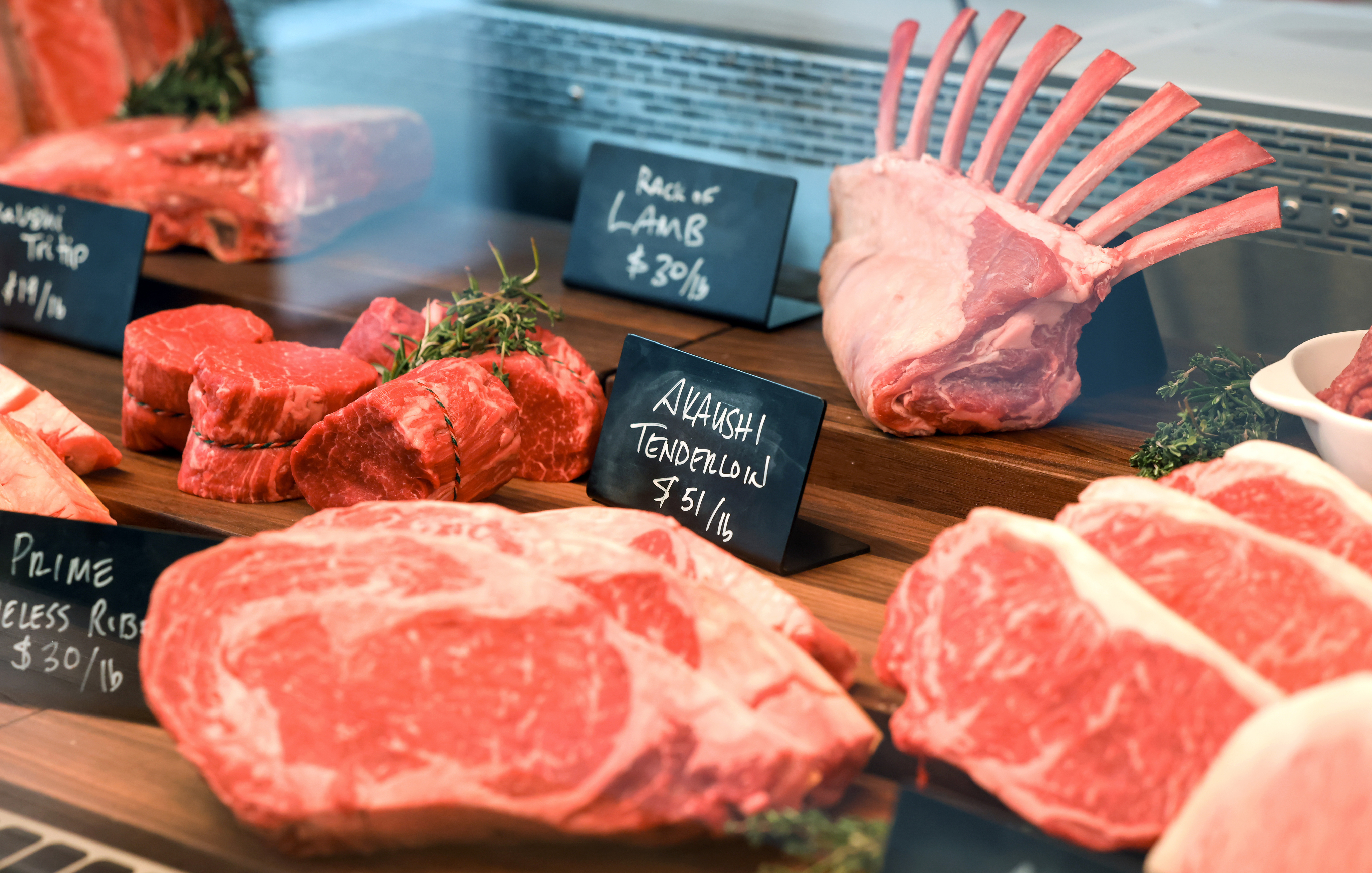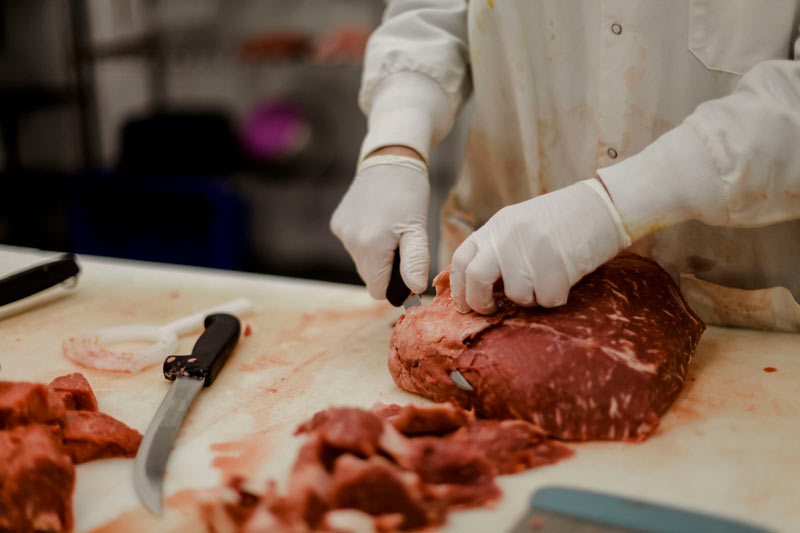Top Factors to Shop at Bagley Farms Meat Market Edwardsville IL for Costs Meats
Top Factors to Shop at Bagley Farms Meat Market Edwardsville IL for Costs Meats
Blog Article
Reveal the Art of the Butcher's Cut in a Modern Meat Market
In the ever-evolving landscape of modern meat markets, the butcher's cut has actually transcended its traditional origins, merging olden craftsmanship with modern practices. What absolutely sets the modern-day butcher apart is their ability to create a much deeper connection in between consumers and the beginnings of their meat.
Evolution of Butchery Methods

The mid-20th century saw butchery methods even more fine-tuned by scientific understandings right into muscle biology and meat aging, enhancing both inflammation and taste. Developments like vacuum product packaging and refrigeration prolonged product shelf-life, allowing butchers to expand offerings and enhance quality assurance. This duration likewise marked the surge of customized devices, such as band saws and meat slicers, which increased accuracy and effectiveness in meat handling.
Computerized systems currently aid in monitoring pet provenance and optimizing cuts to satisfy specific client choices. Furthermore, a renewal in artisanal butchery has emerged, mixing standard abilities with contemporary understanding to provide to consumers seeking honest and lasting meat options.

Recognizing Meat Cuts

Understanding the details of meat cuts is vital for both butchers and consumers looking for quality and worth. For butchers, accurate cuts reflect ability and respect for the craft, making certain minimal waste and optimum yield.
The key categories of meat cuts include primitive, sub-primal, and retail cuts. Butchers then break these down additionally into sub-primal cuts, prior to lastly generating retail cuts available to consumers, like ribeye or tenderloin.
Recognizing muscle structure is critical; muscles utilized much more often by the pet tend to be tougher and are best fit for sluggish food preparation approaches, while less-used muscles, like those found in the loin, are more tender and suitable for barbecuing or roasting. Experience with these differences encourages customers to make enlightened choices, enhancing their cooking endeavors.
Selecting Top Quality Meat
Picking the best meat involves even more than just selecting a visually appealing click to find out more item from the display. The art of choosing top quality meat needs a discerning eye and understanding of particular qualities that signify freshness and excellence.
Secondly, take into consideration the marbling, which describes the white streaks of fat within the muscular tissue. Correct marbling is a click for source key indication of inflammation and flavor, as it melts during food preparation, boosting the meat's juiciness. Remember, greater marbling frequently associates with premium top quality cuts, such as USDA Prime.
Structure is another essential element; meat should really feel firm to the touch, not slimy or extremely soft. Additionally, be conscious of the scent. Fresh meat must have a tidy, neutral smell, free from any kind of sour or repulsive odors.
Combining Cuts With Food Preparation Methods
Effectively coupling cuts of meat with the suitable food preparation techniques is necessary for accomplishing optimal taste and appearance. Various cuts vary in tenderness, marbling, and connective cells web content, each calling for details methods to unlock their possibility. For instance, tender cuts like filet mignon and ribeye, with their intrinsic marbling, take advantage of high-heat, quick-cooking approaches such as grilling or pan-searing. These approaches enhance the meat's natural flavors and ensure a juicy surface.
On the other hand, tougher cuts like brisket and chuck roast are rich in collagen, which breaks down into jelly when prepared gradually. These cuts are ideal for braising or slow roasting, allowing the meat to soften with time and establish deep, complicated flavors. Cuts such as short ribs and pork shoulder make out well with slow-cooking techniques, where prolonged cooking times transform their robust appearances right into succulent dishes.
Lamb shanks and oxtail, which call for extended cooking to soften, are best candidates for cooking or sluggish simmering. These methods coax out abundant, passionate flavors while maintaining dampness. By comprehending the special attributes of each cut, chefs and home chefs alike can raise their culinary productions, making sure each meal is both pleasing and unforgettable.
The Butcher's Function Today
Navigating the progressing landscape of the modern meat market, Visit This Link the butcher's function today expands beyond simple prep work of cuts. Contemporary butchers are culinary craftsmens, educators, and supporters for lasting practices.
Along with crafting specific cuts, butchers now involve straight with customers, using cooking advice and tailoring options to match individual requirements and choices. Their competence in meat aging, marbling, and taste accounts empowers consumers to make enlightened choices, enhancing their culinary experiences. This individualized solution exhibits the butcher's evolving role as a trusted consultant in the cooking area.
Moreover, butchers are critical in lessening waste, making use of entire pets to develop varied items such as sausages and supplies - bagley farms meat market edwardsville il. This comprehensive approach not only respects the animal however likewise lines up with contemporary sustainability goals. This way, the contemporary butcher symbolizes both practice and innovation, adjusting to an ever-changing market while preserving the virtuosity and stability of their craft

Conclusion
Proficiency in understanding varied meat cuts and high quality indicators equips butchers to supply enlightened recommendations, straightening certain cuts with optimal food preparation approaches. By honoring historical methods while accepting contemporary demands, the butcher's duty stays vital in today's advanced meat market.
Report this page